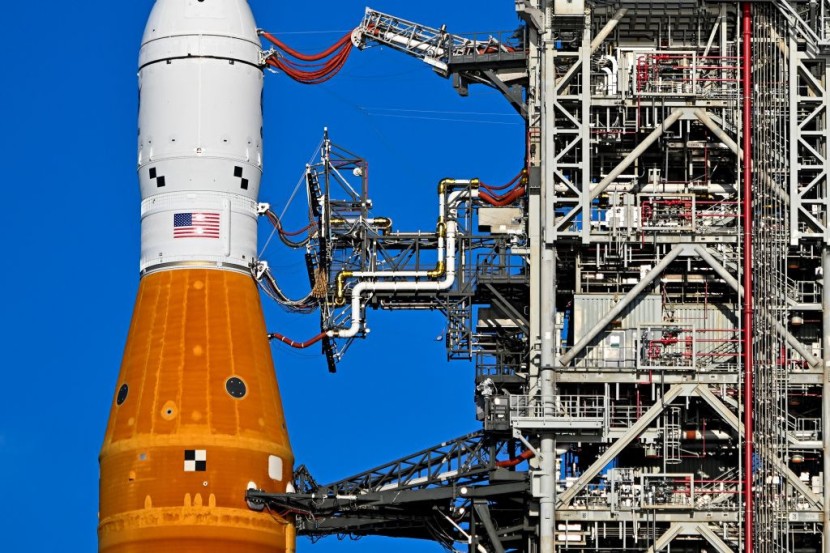
NASA's Artemis 1 moon mission remains on the launch pad for complex repairs.
The unmanned Orion spaceship will be sent into lunar orbit and return using the space agency's new Space Launch System (SLS) megarocket.
The US space agency tried to start the epic mission on Saturday, September 3 but had to stop because it could not fix a leak of supercold liquid hydrogen (LH2) propellant in time, according to Space.
The "quick disconnect," which connects the SLS core stage with a propellant line coming from the massive rocket's mobile launch tower, is where the leak happened.
The Artemis 1 crew has opted to replace the seal on the problematic quick disconnect, and agency officials revealed in an update on Tuesday night after considering the problem for a few days.
The spaceship's stack has been sitting on Pad 39B at Kennedy Space Center (KSC) in Florida for the past three weeks, where this operation will be carried out.
Other Potential Problem
NASA has previously stated that there was no chance the SLS would be ready to fly during the most recent launch window, which closed on Tuesday, September 6.
The following NASA Artemis Launch window is from September 19 until October 4. However, there's another potential problem: On October 3, NASA plans to launch Crew-5, a mission that would send a brand-new crew of astronauts to the International Space Station on a SpaceX rocket. Additionally, NASA will need to undertake efforts to prevent launch conflicts.
Another NASA rocket launch window, lasting from October 17 to October 31, will start later in October.
#Artemis I update: Teams have decided to repair a seal between the mobile launcher and the rocket at @NASA_Kennedy’s Launch Pad 39B. We are continuing to review options for the next launch attempt. https://t.co/90Hc3owp37 pic.twitter.com/o71AlgKJ3L
— NASA (@NASA) September 7, 2022
According to Jim Free, NASA's associate administrator for exploration systems development, the precise time frame and window NASA aims for will depend on several variables, such as how well it can coordinate with SpaceX regarding the Crew-5 launch and how long the SLS rocket stays on the launch pad as engineers resolve the leak issue.
Massive quantities of ultra-chilled liquid oxygen and liquid hydrogen must be fed into the SLS rocket's tanks during refueling.
When loading hydrogen, the fuel pump starts slowly before speeding up in a process known as a "rapid fill."
The "huge leak" that happened during the quick fill was significantly larger than the leaks that NASA had discovered during the August 29 launch attempt.
"Performing the work at the pad requires technicians to set up an enclosure around the work area to protect the hardware from the weather and other environmental conditions, but enables engineers to test the repair under cryogenic, or supercold, conditions," according to NASA's blog.
Officials want to find a fix and the issue's root before launching the spaceship again.
More Explorations Set
According to Michael Sarafin, the mission manager for Artemis, one theory as of Saturday was that a valve issue may have overpressurized the hydrogen, causing it to be under 60 pounds per square inch of pressure as opposed to the 20 pounds per square inch they had planned.
This mission will make many further expeditions to the moon possible by Artemis. The manned Artemis II mission, which could launch as early as next year, will circle the moon like that of Artemis, according to CNN.
Later this decade, Artemis III will put astronauts on the moon for the first time since the Apollo mission in the 1960s.
As it prepares for the subsequent launch attempt, NASA could decide to take another look at those problems.
Related Article: UN Investigators Propose Security Zone Around Zaporizhzhia Nuclear Power Plant After Near-Catastrophic Events








